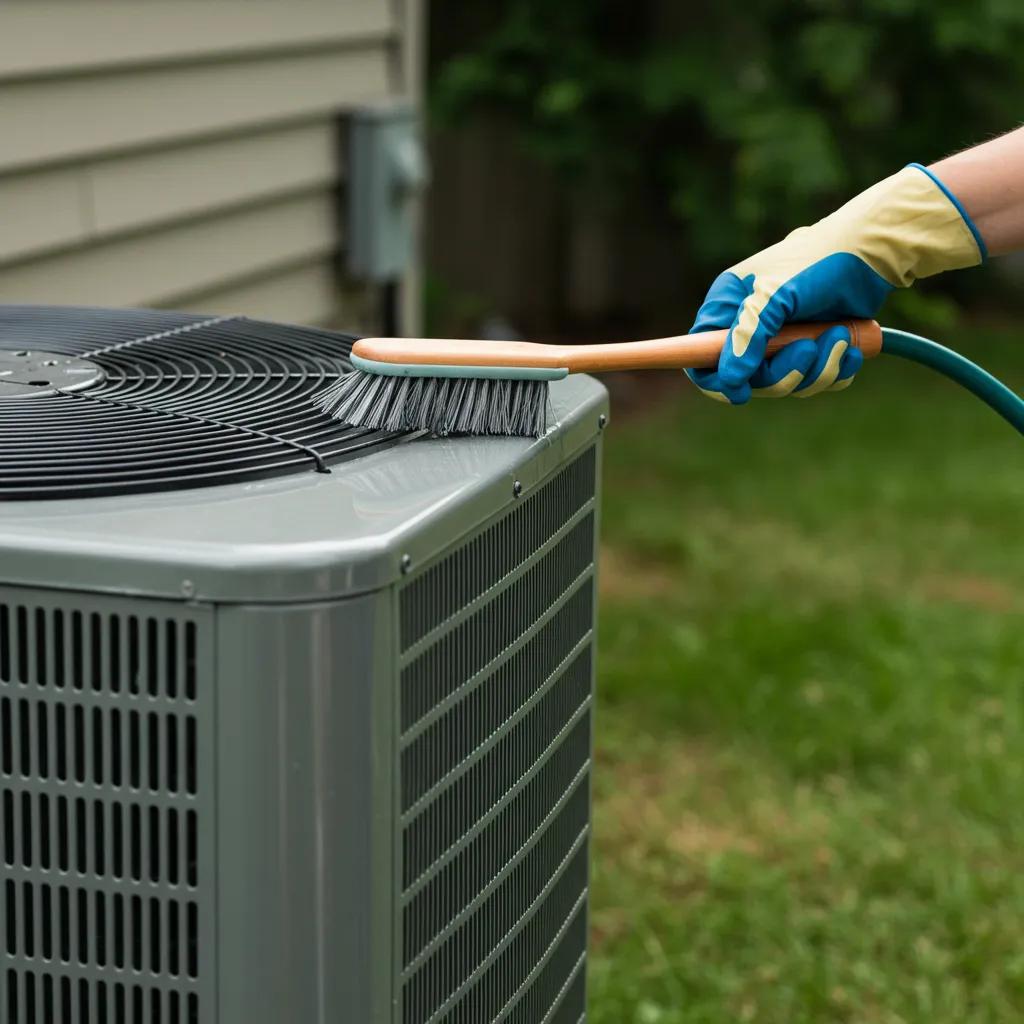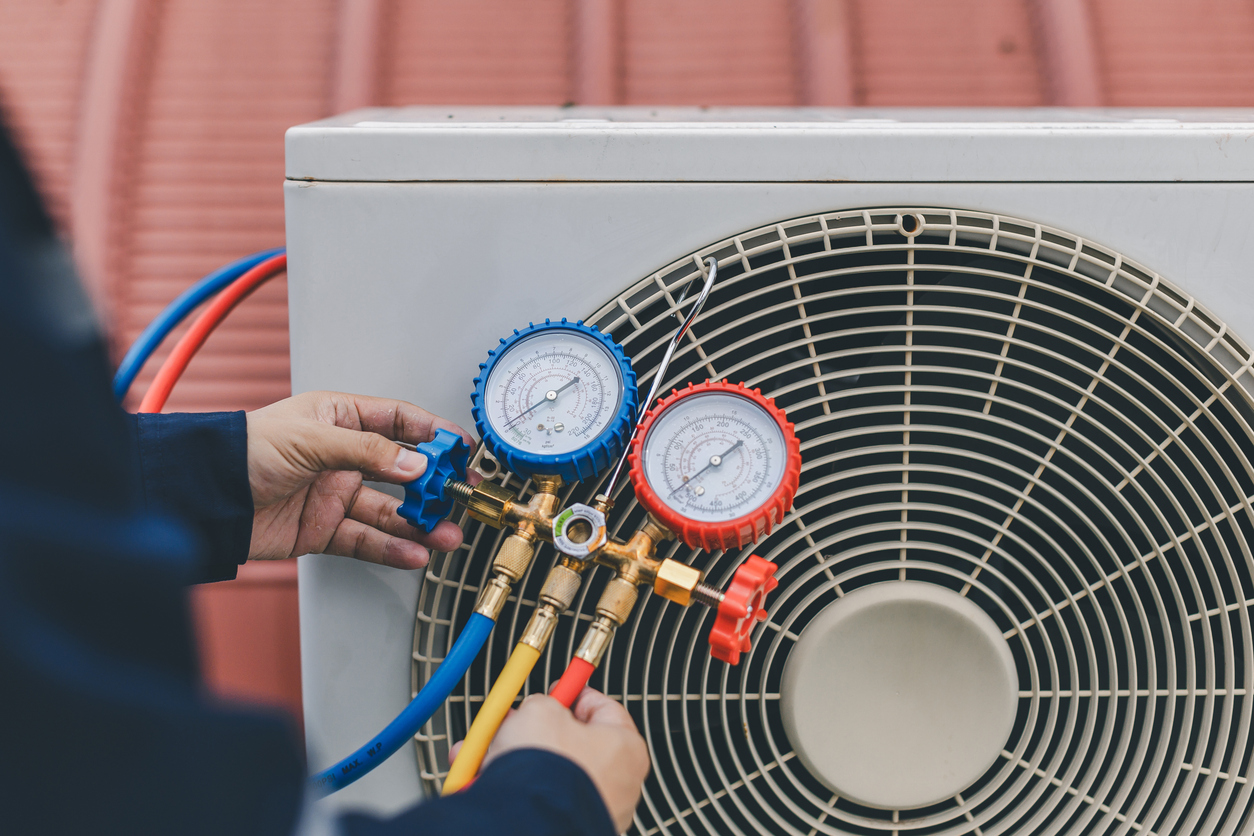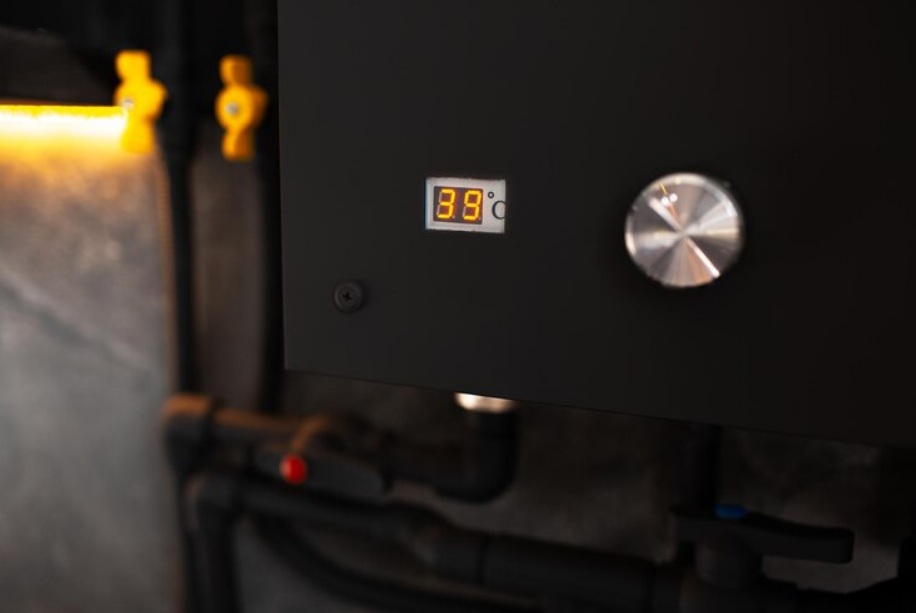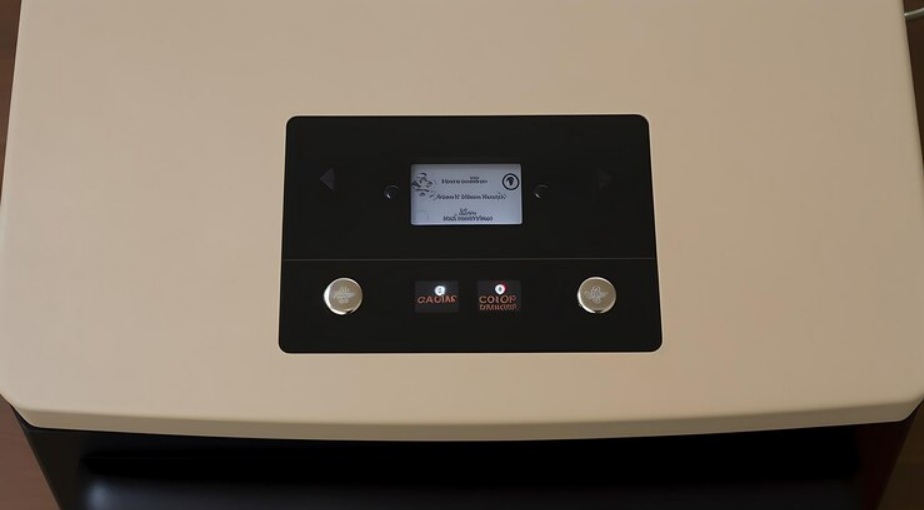
Simple DIY HVAC Maintenance Tasks: Essential Home Air Conditioning and Heating Upkeep for Energy Efficiency and Comfort
Keeping your HVAC system in top shape with regular, simple maintenance ensures your home stays comfortable year-round while cutting down on wasted energy and extending the life of your equipment. This guide walks you through practical DIY HVAC maintenance tasks you can safely handle, explains why each step is crucial for energy efficiency and indoor air quality, and shows how these actions fit into a smart preventative maintenance strategy. We’ll cover routine air filter care, outdoor unit upkeep, checking vents and condensate drains, thermostat adjustments, basic heating checks, and seasonal checklists to get your system ready for cooling and heating. Many homeowners deal with weak airflow, higher energy bills, or stale indoor air simply because small maintenance steps are overlooked. This guide provides step-by-step instructions and clear signs that tell you when it’s time to call in the pros. The article is organized into seven key sections: changing and managing air filters, cleaning your outdoor unit, optimizing airflow through vents and ducts, thermostat and heating system adjustments, seasonal maintenance tasks, troubleshooting common issues, and improving indoor air quality with simple DIY measures. Throughout, we’ll integrate topics like HVAC maintenance, AC maintenance, DIY HVAC, and maintenance plans to help you take action now and know when to seek certified professional help.
How Do I Change and Manage My HVAC Air Filters for Better Air Quality?
Your air filter is the first line of defense, capturing dust and allergens to protect your HVAC components and maintain healthy indoor air. Proper filter management boosts energy efficiency because a clean filter means less resistance for your system, reducing fan runtime and saving energy while extending equipment life. Regular filter checks also prevent common problems like reduced airflow and system short-cycling, leading to immediate comfort and health benefits. Below, you’ll find practical steps, comparisons, and troubleshooting tips for selecting and managing filters safely and effectively.
How Often Should I Replace or Clean My Air Filters?
How often you need to replace or clean your air filter depends on the filter type, your household’s habits, and environmental factors that influence airborne particles. As a general guideline, basic disposable filters typically need changing every 1–3 months. Pleated filters usually last about 3 months in average homes, while high-MERV or allergy-grade filters may need checking and replacement every 1–3 months, especially during periods of high pollutant levels. Homes with pets, smokers, or recent renovations will likely require more frequent changes to prevent dust buildup and airflow restriction. Regular visual checks and airflow tests are the best ways to determine the ideal interval for your specific home.
Clear signs that indicate it’s time for an earlier replacement include a visibly dirty filter, reduced airflow from your vents, and increased dust settling on surfaces. These signals warrant checking your filters monthly, especially during peak usage seasons. Consistent replacement reduces strain on your system and helps maintain your overall HVAC maintenance schedule throughout the year.
What Are Common Issues When Changing Air Filters and How Can I Troubleshoot Them?
Common challenges when changing air filters include selecting the wrong size, installing the filter with the incorrect airflow orientation, or difficulty accessing the filter slot due to stiff panels or stubborn fasteners. Always measure your filter slot before buying to ensure you get the correct size, and pay close attention to the airflow direction arrow printed on the filter frame for proper installation. If an access panel is difficult to open, turn off the power to the unit first and gently release the fasteners to avoid damaging the panel or its seal.
If replacing the filter doesn’t restore airflow or reduce dust, it’s a good idea to inspect the blower and return ducts for deeper obstructions or consider the possibility of a failing fan motor. Persistent issues often point to system problems that require professional diagnostic service to pinpoint electrical or mechanical faults.
What Are the Best Practices for Cleaning and Maintaining Outdoor HVAC Units?

Your outdoor HVAC unit needs periodic attention to keep it free of debris, maintain its coils, and ensure adequate clearance for optimal heat exchange and efficient operation. Keeping the condenser and fan area clear of leaves, grass clippings, and encroaching plants improves airflow, reduces the compressor’s workload, saves energy, and prevents premature wear. Safe outdoor unit maintenance involves shutting off power before you begin, using soft tools to avoid damaging delicate fins and coils, and knowing when to hand over tasks like refrigerant handling or major coil restoration to a professional. The following subsections will guide you through practical debris removal, coil-care tips, clearance guidelines, necessary tools, and indicators that signal it’s time to call a professional.
How Do I Safely Remove Debris from My Outdoor AC or Heat Pump Unit?
Safe debris removal begins with turning off the outdoor unit at the disconnect switch or circuit breaker to prevent accidental fan startup or electrical hazards. Remove large debris by hand, then use a soft-bristle brush to gently clear loose material from the fins. Avoid inserting tools that could bend the fins or damage wiring. Always work from the top down to prevent pushing debris deeper into the unit. After clearing, you can lightly hose down the exterior to remove remaining dust, using low water pressure to protect the fins and coil surfaces.
Check for debris seasonally and after significant storms to ensure consistent airflow. If you notice bent fins or exposed wiring, stop your DIY work immediately and seek professional assessment for safe repairs.
How Can I Clean Condenser Coils to Improve System Efficiency?
Cleaning your condenser coils is essential for efficient heat transfer and reducing compressor run time, as accumulated grime acts as an insulator. Use a gentle coil cleaner specifically designed for HVAC coils, following the manufacturer’s instructions. Allow the cleaner the recommended dwell time, then rinse with low-pressure water, directing the spray in the same direction as the normal airflow to avoid pushing debris further into the coil pack. Never use high-pressure washers or harsh chemicals, as these can deform fins or strip protective coatings. A fin comb can be helpful for gently straightening minor bends in the fins.
If your coils are heavily soiled, coated with sticky residues, or appear damaged, professional coil cleaning is the safest and most effective approach. Professionals have the right equipment and expertise to handle chemicals safely and restore the coils without risking damage to the refrigerant or electrical systems.
Why Is Maintaining Proper Clearance Around Outdoor Units Important?
Maintaining adequate clearance around your outdoor unit is crucial for unobstructed airflow, which is vital for efficient heat exchange. Without it, the compressor can overheat or cycle excessively. A good rule of thumb is to keep at least 600–900 mm (about 2–3 feet) of clear space on all sides of the unit. Ensure taller vegetation is trimmed back to prevent it from restricting airflow. Insufficient clearance increases static pressure on the coil, reducing system efficiency and potentially shortening the equipment’s lifespan due to higher operating temperatures.
Regularly clearing the area around your unit also helps prevent debris from being drawn into the system and deters pests. Simple yard maintenance is therefore an effective energy-efficiency practice that contributes to the long-term reliability of your system.
When Is Professional Outdoor Unit Maintenance Recommended?
You should seek professional outdoor unit service for issues such as bent fins affecting multiple coil rows, visible refrigerant oil stains, unusual mechanical noises originating from the compressor, or when it’s time for your annual tune-up. Professionals are equipped to safely check refrigerant levels, perform thorough coil restoration, and conduct comprehensive performance diagnostics. Scheduling professional Heat Pump Maintenance or AC Maintenance ensures that certified technicians handle refrigerant safely, perform accurate electrical testing, and make precise seasonal adjustments. Regular professional inspections can catch early signs of wear and tear and help maintain manufacturer warranties where applicable.
Timely professional intervention is key to protecting your equipment’s longevity and restoring optimal efficiency when DIY measures are not enough.
What Are Simple DIY Steps to Clean Air Vents and Ducts for Better Air Quality?
Begin by turning off your HVAC system, then remove the register covers. Use a vacuum with a brush attachment to clean visible dust from the registers and surrounding surfaces, removing buildup that can impede airflow. A damp cloth can be used to wipe down the grills. If you notice uneven airflow in different rooms, consider rotating register positions to help balance distribution. For deeper ductwork beyond easily accessible runs, professional duct cleaning is highly recommended, as DIY methods typically cannot effectively clean the full length of ducts and may inadvertently dislodge contaminants into your living spaces.
Regular surface cleaning of vents and scheduled professional duct inspections help maintain balanced airflow and minimize allergen recirculation, contributing to a healthier indoor environment.
What Are the Key Seasonal HVAC Maintenance Tasks Homeowners Should Perform?
Seasonal maintenance prepares your HVAC system for peak cooling or heating demands, which helps prevent emergency repairs and supports efficient operation throughout the year. Tasks performed before summer focus on ensuring cooling capacity and proper airflow, while pre-winter tasks prioritize heating readiness and system safety. Preventative maintenance lowers operating costs and extends equipment life by addressing minor issues before they escalate into major problems. The subsections below provide focused checklists, explain the benefits for system lifespan, and outline how Evergreen Heating & Cooling’s Maintenance Plans work in tandem with your DIY efforts, along with Promotions designed to lower initial service barriers.
What Maintenance Should I Do Before Winter Heating Season?
Before winter arrives, remember to replace your air filters. Visually inspect your furnace or boiler’s pilot light or ignition system for any signs of soot or discoloration. Verify your thermostat setpoints and schedules are correctly configured for heating mode. Also, inspect the seals around your windows and doors to minimize heat loss. For radiator systems, bleed out any trapped air to ensure even heating, and for boilers, check the pressure and look for leaks. Test your carbon monoxide alarms and ensure vents remain clear of obstructions to maintain safety. Addressing minor insulation or sealing tasks can complement your HVAC system’s readiness.
A proactive pre-winter checklist helps prevent emergency repairs and ensures consistent home comfort throughout the colder months.
How Can I Use Evergreen Heating & Cooling’s Maintenance Plans to Complement DIY Efforts?
Evergreen Heating & Cooling offers a comprehensive Maintenance Plan designed to complement your home maintenance routines by scheduling professional inspections and tune-ups. This approach helps reduce surprise failures and encourages proactive care. Our Gold Plan includes two annual visits, a complimentary filter, and discounts on new installations and IAQ products, while the Silver Plan provides one annual visit with the same free filter and discounts. Additionally, Promotions like $25.00 off service call fees are available to incentivize new clients to initiate service. These plans work seamlessly with your regular DIY tasks, ensuring both routine checks and professional system diagnostics are consistently addressed.
Utilizing a Maintenance Plan effectively coordinates professional care with your own actions, ensuring optimal performance and efficient long-term cost management.
What Are Common Troubleshooting Tips for Simple HVAC Issues at Home?
Many common HVAC problems can be identified through simple diagnostics, such as checking filters, vents, thermostat settings, and visible components for obvious issues. Addressing filter and thermostat problems often resolves poor airflow, unusual noises, and inconsistent temperature performance. When DIY troubleshooting doesn’t resolve the issue, a clear escalation to professional service is essential for maintaining safety and system integrity. The subsections below will guide you through diagnosing noises and airflow problems, easy DIY fixes, and clear indicators for when to contact Evergreen Heating & Cooling for professional service.
How Do I Identify and Fix Basic HVAC Problems Like Strange Noises or Poor Airflow?
Strange noises often originate from loose panels, debris within the blower, or failing fan bearings, while poor airflow is frequently caused by clogged filters, blocked registers, or closed dampers. Start with a thorough visual inspection: tighten any loose screws, replace a dirty filter, and confirm that registers are open and unobstructed. If noises persist after these basic checks, power down the system and inspect the blower compartment for any foreign objects or signs of fan damage. Persistent abnormal sounds or significant airflow loss after these steps typically indicate mechanical or electrical faults that require professional diagnostics.
Following a logical inspection sequence helps quickly identify common causes, prevents unnecessary repairs, and guides you on when it’s appropriate to call a technician.
What Are Easy DIY Fixes for Thermostat or Filter-Related Issues?
Simple thermostat fixes include replacing weak batteries, ensuring the device is set to the correct mode (heat or cool), and resetting the unit according to the manufacturer’s instructions to clear temporary glitches. Filter-related fixes are equally straightforward: replace or clean the filter, verify its correct orientation, and inspect for any gaps where air might be bypassing the filter. After completing these steps, retest the system’s operation to confirm that the issues have been resolved; often, these simple thermostat and filter adjustments restore normal performance. If problems recur, make a note of the symptoms and timing to provide helpful details for a professional visit.
These minor fixes address a significant portion of homeowner service calls and help keep systems running smoothly between scheduled professional maintenance appointments.
When Should I Stop DIY and Call Evergreen Heating & Cooling for Professional Service?
Stop your DIY efforts and contact Evergreen Heating & Cooling immediately for issues such as suspected refrigerant leaks, burning smells, electrical faults, repeated short-cycling, or complete system shutdowns. These situations require the expertise of certified technicians and adherence to strict safety protocols. For urgent problems occurring outside of normal business hours, our 24/7 Emergency Service is available to address immediate risks and restore safe operation. Use the company’s Contact Us pathway or phone number to schedule professional diagnostics whenever red flags appear, ensuring a prompt and certified response to complex or hazardous faults.
Escalating to professional help safeguards occupants and prevents further damage to your HVAC systems.
Conclusion
Regular DIY HVAC maintenance not only enhances energy efficiency but also prolongs the lifespan of your system, ensuring a comfortable home environment. By following the outlined tasks, homeowners can significantly improve indoor air quality and reduce unexpected repair costs. For those seeking a comprehensive approach, consider integrating professional services with your DIY efforts for optimal results. Start your journey towards a more efficient HVAC system by exploring our maintenance plans today.


Enjoy flexible financing options that make upgrading or repairing your HVAC system easy and budget-friendly.












